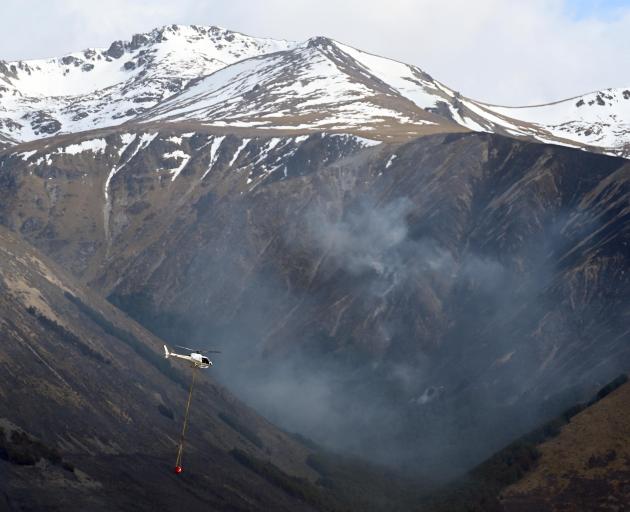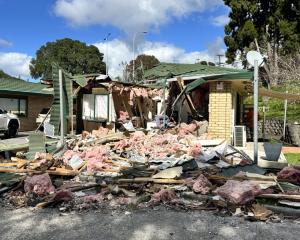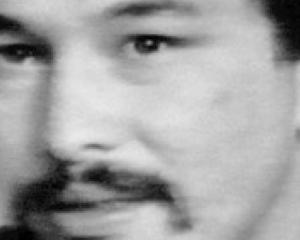As images began to emerge of the aftermath of the fire that swept through Lake Ohau Village this week, what struck some observers was the apparently random nature of the devastation.
Some houses escaped the conflagration that burned through just over 5500ha, more or less unscathed.
Others among the estimated 50 houses that burned were razed to the ground.
Winds of up to 160kmh challenged fire crews tackling the Ohau fire yesterday morning as specialists worried about further evidence that New Zealand’s fire season was arriving earlier in recent years due to a changing climate.
But for some, the heart of the debate lies in how to manage the land in the South Island’s high country.

Can livestock on the land reduce fire risk?
On Monday, Federated Farmers called for an urgent review of how the Department of Conservation managed land in the area.
Federated Farmers high country chairman Rob Stokes drew a direct line between this week’s Mackenzie Basin fire and one less than 25km away at the western shore of Lake Pukaki that burned another 3100ha several weeks earlier.
"Both these fires were entirely avoidable," Mr Stokes said.
Federated Farmers argued that "locking up" high country land without passive grazing from livestock was dangerous.
The Government’s new freshwater policies and the reduction of livestock numbers on the landscape that would come through new fencing requirements would result in the growth of more vegetation ready to burn.
"This fire is another red flag; how many do we need?" Mr Stokes asked.
Environmentalists pushed back, including University of Otago Emeritus Professor Sir Alan Mark, who said "with or without stock grazing" tussock grasslands would burn.
"My years on intensive research into our high country grasslands has shown that grazing animals reject the rank and dead foliage of both the native and exotic grasses, and select the actively growing green foliage, hence do not significantly reduce the fuel load," he said.
Last year’s fire at Deep Stream burned through more than 4500ha of land before it was contained, and showed grassland fires, when fanned by strong winds, would jump roads and other firebreaks.
Both the lowland short tussock grasslands and the upland snow tussock grasslands, as well as the exotic browntop-dominated grasslands that usually replaced them with overgrazing, were all about equally fire-prone, he said.
Are prescribed burns the answer?
While in other countries large swathes of forest were burned to create firebreaks, the vegetation in those countries was very different from New Zealand’s plant life, Lincoln University senior lecturer Tim Curran said.

Dr Curran said while prescribed burns worked elsewhere, those ecosystems had already adapted to fire.
"Prescribed fire will generally favour species that are adapted to fire," Dr Curran said.
"In New Zealand that includes many weeds that are actually quite flammable — so things like gorse and pines.
"Some of the species that we wouldn’t want to see in our landscape will likely come up quite densely and recover well after fire."
But also, those charged with managing the land did not have a good idea of the likely impacts of prescribed burns on the ecological values of tussock grassland, Dr Curran said.
Another tool, "green firebreaks", or strips of less flammable plants that act as firebreaks, was a subject of research at present.
Work was under way to find "low-flammability species" in Central Otago, but there was still a lot of work to be done to determine what plants could be used in arid areas such as Central Otago and the Mackenzie Basin to create green firebreaks.
Another important consideration for fire containment was dealing with ignitions.
"Over 99% of fire ignitions in New Zealand come from human sources," he said.
"There are very, very few natural fires."
How has the landscape evolved?
People could be surprised to learn the native wilderness in Department of Conservation reserves in the Mackenzie Basin would not be there if not for fire in first place, Manaaki Whenua Landcare Research ecologist Duane Peltzer said.
"People would never picture this these days, but if you could kind of wind back the time in history it would have been mostly forest cover — even in the Mackenzie.
"And it might have been more open woodland than closed canopy, but ... it used to be podocarp forest and beech and lots of shrubs, hardly any tussocks.
"You wouldn’t recognise it. You wouldn’t think it was the same thing at all."
Once humans showed up, the native woodland cover was the first thing that disappeared from the landscape through what were likely to have been both accidental and deliberate fires, he said.

The tussocks that people now associated with the area spread into the basin because they were the plants that recovered best after fires.
Now what put the area at risk was another species that recovers well from fire.
The area’s wilding pines are a fire risk and very difficult to control.
"Those are some of the fastest growth rates recorded for conifers anywhere in the world," Dr Peltzer said.
"You don’t have time to sit around for five years and see what they do. It’s actually quite urgent."
Are large, early-season fires the new normal?
Researchers are documenting the fire behaviour and spread rate of the August fire at Lake Pukaki and will soon move into the Lake Ohau area to do the same.
Scion fire research group senior fire scientist Grant Pearce said the wilding pines that burned did defy existing fire modelling, but the fires at the two parallel alpine lakes, importantly, rapidly spread through grasslands.
At Lake Pukaki, the fire spread through the grasslands and then into wilding pines where it burned fiercely into the canopy of the trees in some areas, but in other large areas it did not.
The research under way there was trying to understand why that happened.

But at Lake Ohau, Mr Pearce said, researchers would try to understand what happened in order to feed into any discussions about rebuilding Lake Ohau Village, as well as to help others design their homes and new communities.
"One of the things is to see if there is some science around the randomness as to why some houses survived and others didn’t," Mr Pearce said.
The fire probably burned in the grassed areas and gardens around the houses at Lake Ohau Village, then as larger sources of fuel, such as trees, caught fire, embers would have drifted into houses.
Recommendations could soon be made on construction materials to be used for houses, future designs and vegetation around the houses — where firebreaks, including roads, were effective and where they were not.
But, he said, it was important to note there was a bigger picture to consider.
While less vegetation on a landscape would create a less intense fire, under extreme conditions such as drought, or under strong winds, even if pastures were well grazed, fire would carry across that vegetation and could still spread rapidly.
"Fuel management itself isn’t a panacea."













